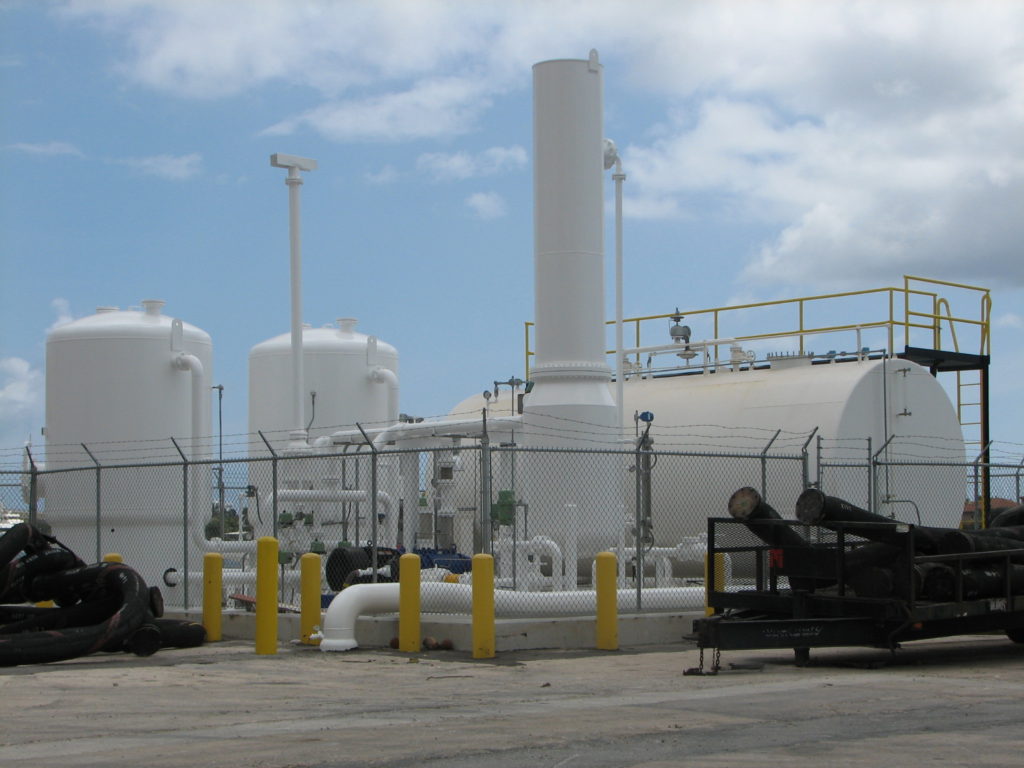
Air Emissions Permits Basics
Does your business need air emissions permits? There are three considerations. Firstly, the answer depends on what types of equipment it operates, what chemicals it uses, and what kinds and quantities of pollutants it generates. Secondly, the Florida Department of Environmental Protection (FDEP) focuses on larger emission sources and certain smaller sources. To explain smaller sources, it is the toxic pollutants they can emit. And, what are these smaller sources? They can include paint spray booths, dry cleaners, and fiberglass spa manufacturers.
Hazardous Air Pollutants & Nuisances
There are two categories of pollutants which are regulated. Firstly, are hazardous air pollutants (HAPs) which present a higher risk to human health. These include common chemicals like methyl ethyl ketone (MEK) in paint or solvents, tetrachloroethylene or perc used in dry cleaning, and styrene in fiberglass. The U.S. Environmental Protection Agency (EPA, www.epa.gov) determines HAPs. Secondly, are nuisances. For example, these nuisances include blowing dust, paint overspray, metals, or fuel odors, among others. They can be emitted from a stack or from a building. The latter are fugitive emissions. The EPA and FDEP may require permits for these nuisances.
Air Emissions Permits Strategies
Obtaining an air emissions permit for a source, even a small one, can be a lengthy, complicated, and expensive process for any business. Fortunately, there are some less harrowing alternatives for certain sources. To begin with, the process can be modified. For example, use less hazardous chemicals. Secondly, reduce the amount of material escaping to the atmosphere. As a result, the emissions may drop below a permitting threshold.
For common sources with similar operations, there may be a general permit available with less rigorous application and compliance requirements. To determine permit requirements, businesses must review their operations, chemicals, controls, and pollutants. With this information, they will be ready to determine permit requirements.
Types of Permits
There are a few different types of air emissions permits:
- Title V Permits cover the largest sources and are the most complicated to obtain.
2. Federally Enforceable State Operating Permits (FESOPs) are for smaller sources which still require an individual permit.
3. General Permits cover commonly encountered sources such as concrete ready-mix plants, crematories, and other facilities.
Permit Applications
The air permit application is a two-step process for individual air emissions permits such as Title V Permits or FESOPs. Firstly, is the Construction Permit application. That allows construction and installation of the source. Second, is the Operating Permit application. That allows the source to operate.
Before you submit the Operating Permit application, the FDEP may require inspections, engineering certifications by a Florida Professional Engineer (P.E.), and emissions testing. The Operating Permit contains general conditions and specific conditions which can include record keeping, testing, and reporting.
All permitting requirements originate from the Clean Air Act (CAA) passed years ago by Congress. EPA has promulgated regulations to implement the CAA. FDEP has passed its own state regulations to enforce the EPA’s federal regulations. Check FDEP out at https://floridadep.gov. Therefore, in Florida the FDEP is the air permitting authority. So typically, contact the appropriate FDEP district office to determine permit requirements. For some of the larger counties, the counties themselves are the permitting authority for the FDEP. But, FDEP can tell you that.
Conclusion

So, there you have it – a broad picture of air emissions permits in Florida. Let us know if we at Environmental Safety Consultants can help you. We service Bradenton, Sarasota, St. Petersburg, Clearwater, Tampa, and Fort Meyers. That includes Manatee, Pinellas, Hillsborough, Lee and other counties from Pensacola (Escambia County) to Key West (Monroe County). You will be able to breathe a lot easier! Contact ESC and get a reply promptly!

 Industrial hygiene testing is a hot topic as of late. You would have to be an ostrich with your head in the sand if you haven’t heard about silica on the job lately. Why all the hype? Well, there has been a lot of concern and posturing over the last few years. OSHA finally drew the line in the sand (no pun intended!) and lowered the 8 hour time weighted average (TWA) permissible exposure limit (PEL) to 50 micrograms per cubic meter (μg/m3). Employers had a lead time of a year or two to get into compliance, but many are in the throws of determining if they have a problem and, if so, of resolving it. The new limit applies to manufacturers, construction, maritime, and general industry employers. More information is available on
Industrial hygiene testing is a hot topic as of late. You would have to be an ostrich with your head in the sand if you haven’t heard about silica on the job lately. Why all the hype? Well, there has been a lot of concern and posturing over the last few years. OSHA finally drew the line in the sand (no pun intended!) and lowered the 8 hour time weighted average (TWA) permissible exposure limit (PEL) to 50 micrograms per cubic meter (μg/m3). Employers had a lead time of a year or two to get into compliance, but many are in the throws of determining if they have a problem and, if so, of resolving it. The new limit applies to manufacturers, construction, maritime, and general industry employers. More information is available on